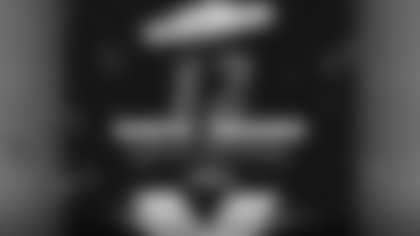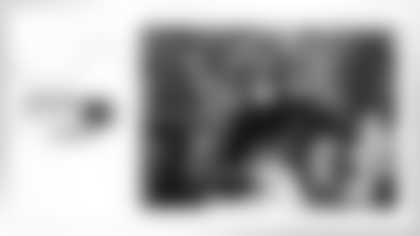After the Bears failed to score on their first five possessions last Sunday against the Giants—including three three-and-outs—running an up-tempo no-huddle offense provided a much-needed spark.
The Bears marched 59 yards on nine plays in just 1:47 to set up Eddy Pineiro's 26-yard field goal with :08 left in the first half. Quarterback Mitchell Trubisky completed 4 of 5 passes for 42 yards on the drive.
Trubisky and the Bears have had similar success in hurry-up mode in other games this season, in part because it simplifies what is required of the players.
"[The defense] can't substitute and we're not substituting either," Trubisky said. "So everybody knows where their spots are at and we're playing fast, and I think that's when we play free and guys are getting in the right spots and guys are making plays.
"I'm seeing the defense, and they're not doing a bunch of crazy looks because we're going fast and they've got to respect that."
Coach Matt Nagy understands the value of utilizing an up-tempo offense; according to NFLsavant.com, the Bears have run 101 no-huddle plays this season, second most in the league behind the Cardinals.
"You see some tempo that goes on and I think that's good," Nagy said. "We've really done it for a lot of the season. There's been a lot of games.
"There's pros and cons to it. It's always good when it works, and then when it doesn't work, you've got to be careful with that. We like it and we think it's good and we know that Mitch feels comfortable in that and I think our offense does so we want to definitely keep that going."
Offensive coordinator Mark Helfrich also sees benefits in Trubisky operating in hurry-up mode.
"He's just used to it," Helfrich said. "It's kind of his thing that he's done for a long time, obviously in college. It's just a comfort level and it eliminates a lot of the pre-snap stuff that he doesn't have to worry about or we can take off his plate, so that's another layer of just stuff checked off his list."
Trubisky is comfortable with the no-huddle offense in part because he ran it at North Carolina.
"You're seeing the defense and you're kind of just reacting, and it's something I've been doing my whole life, so it's more natural for me," Trubisky said. "I mean, it shouldn't be any different than in the huddle. If we just have that tempo and urgency and everybody is mindful of doing their jobs, they should have the same result. But I think just the comfort level that we have with our two-minute offense is a strength of our offense right now."
So if Trubisky excels in the no-huddle offense and enjoys running it, why don't the Bears employ it all the time? Well, for starters it limits the formations and plays that can be called as well as substitutions that can be made to create favorable matchups. It also prevents changing personnel groupings based on down-and-distance.
"There's communication that goes on with that and they give you different looks on defense," Nagy said. "Sometimes when you get a look that you might not scheme for, it can be different and there can be gray quote-unquote in the decision-making process."
"You are going to be a little limited," Helfrich said. "You're going to have different packages, a different number of plays per formation or plays per personnel group. You're not worried about the play clock, you're not worried about trying to play perfect as much. But then you're also going to have some times where you're not in the ideal play. That's the biggest tradeoff, which is key sometimes."
Another huge factor in not utilizing the hurry-up offense all the time is that a three-and-out puts your defense back on the field much quicker than usual—and the Bears have already struggled at times this season keeping their defense fresh.







